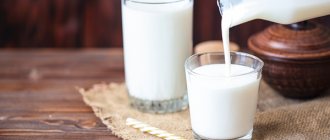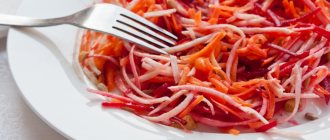09/27/2015 Achilles would have remained alive in his last battle at the Scaean Gate of Troy if he had listened to Polyxena and stuck a plantain leaf smeared with honey on his heel. But he did not heed the admonitions of the princess, who gave him this advice after she had a prophetic dream before the final Hellenic battle for Ilion. The arrow of Zeus, sent by the hand of Paris, struck Achilles in the only vulnerable spot on his body.
Yes, honey could have saved the hero; it is not without reason that it is a recognized universal remedy, familiar to people since prehistoric times. Doctors themselves note its general strengthening effect on the human body: the composition of red cells in the blood improves, weight increases, the acidity of gastric juice is leveled, and the state of the nervous system is normalized.
Honey is especially good for treating diseases of the stomach and digestive tract. However, it, in principle, has a beneficial effect on intestinal digestion. This is explained by the fact that honey contains a high concentration of iron and manganese, which improve the body's absorption of foods. In addition, it awakens the secretory and motor activity of the small intestine and stomach and easily eliminates constipation. Honey is considered an indispensable medicine in the presence of stomach and duodenal ulcers. For comparison: with medicinal treatment of ulcers, it heals in only a third of patients, and with honey solutions – in half. Because it has wound-healing properties and encourages tissue to undergo natural epithelialization. And among other things, the product acts as an antimicrobial agent on the intestinal microflora.
Insidious fructose
According to nutritionist-therapist Olga Lushnikova, honey contains natural sugars (fructose, glucose, maltose and sucrose), as well as water, minerals (calcium, potassium, iron, magnesium, sodium), water-soluble vitamins (C and group B), pollen and some vegetable protein.
“Beekeeping products are easily digestible carbohydrates, which are “fast” sources of energy. They sharply increase blood sugar levels if honey is eaten separately from the main meal,” the expert warns.
According to a specialist, a tablespoon of delicacy contains 64 kilocalories, 17.3 carbohydrates, and 0.06 grams of protein. For comparison, the same amount of sugar contains approximately 80 kilocalories, 20 grams of carbohydrates, and no protein.
According to the nutritionist, the assumption that honey, due to the presence of fructose, as a sweetener is much better than sugar and can be eaten without restrictions by those who are losing weight or have diabetes, is nothing more than a myth. On the contrary, such people should not get carried away with honey. Excessive consumption of the product contributes to obesity, leads to diabetes mellitus and other disorders associated with high insulin production.
Depending on the variety, honey can have a low glycemic index (30) or a very high glycemic index (up to 95), which is not far from the pure glucose benchmark (100). Olga Lushnikova
nutritionist-therapist
According to the doctor, losing weight with fructose (and therefore honey) is a bad idea. The sweetener increases the body's production of fat, as well as very low-density lipoproteins, which are considered carriers of “bad” cholesterol. The expert also refers to a study by the University of Turin that fructose, along with glucose, accelerates the aging process of the body.
Photo: Moscow 24/Evgenia Smolyanskaya
Methods of using honey for high and low acidity
After clarifying the diagnosis and establishing the ulcer, the acidity of the digestive organs is identified for proper treatment. The therapeutic effect and methods of using the natural ingredient depend on the pH environment in the tract.
In order for positive results to emerge after honey therapy, with increased acidity of the digestive organs, 1 tsp is needed. Dissolve honey in 0.2 ml of water. The resulting consistency should be drunk gradually, preferably 2-4 hours before eating food. For the fastest regeneration of affected areas, it is worth repeating every 3 hours after eating food.
A dark horse
However, according to the doctor, honey is significantly superior to sugar in terms of beneficial properties. You just have to be careful when using it. It is not for nothing that people have been using beekeeping products for a long time to cure colds - it effectively reduces the soreness of an irritated throat and helps get rid of coughs. In this sense, linden, acacia and buckwheat varieties have proven themselves well.
Honey is a natural probiotic containing some strains of lactobacteria and bifidobacteria. In small quantities, it has a beneficial effect on the intestinal microbiome and immunity in general. Olga Lushnikova
nutritionist-therapist
The product is also effective for certain gastrointestinal diseases, in particular gastric and duodenal ulcers.
Honey is considered a natural antiseptic due to the content of a natural antibiotic, as well as phytoncides secreted by honey plants (they protect against infectious diseases), and a small amount of hydrogen peroxide.
According to the expert, a high-quality product contains many antioxidants, such as flavonoids and organic acids. Moreover, most of these compounds are in dark varieties. This honey also has more pronounced antibacterial properties. Buckwheat honey has a rich color and thick consistency. Its shades can vary from dark brown to black. Buckwheat honey has a fragrant aroma and tart taste. It contains many vitamins and microelements (for example, iron).
“Chestnut honey has a beautiful chocolate color and a slightly bitter taste with hints of tannin. It contains a lot of pollen, mineral salts and fructose. These substances have a positive effect on the body, especially on the male reproductive system,” says the doctor.
Lushnikova calls angelica honey a premium product with rare healing properties. Its shades range from dark brown to amber with a reddish tint. Angelica honey is widely used in cosmetology, medicine and the confectionery industry, and is used to eliminate intoxication.
Photo: Moscow 24/Alexander Avilov
Beneficial features
There are legends about the miraculous properties of honey. First of all, it has a positive effect on the human immune system and strengthens the body’s resistance to various diseases, and also strengthens the nervous system. In addition, honey retains calcium in the body, thereby strengthening teeth, nails and bones. Bee honeycombs, which must be chewed in the mouth, will also help eliminate problems with teeth and bleeding gums: they contain propolis, well known as a preventative against caries.
Honey also has a beneficial effect on the respiratory system. Due to its anti-inflammatory properties, it effectively works as a remedy for coughs and sore throats. It also helps improve the functions of the digestive system, removes waste and toxins from the body and normalizes intestinal function. Sunflower honey is especially good for this, as it gently envelops the walls of the stomach and intestines. Acacia honey is used for eye diseases, and buckwheat honey contains a lot of iron, so it is recommended for people with anemia and anemia. Well, if you want to improve the condition of your kidneys, liver and gallbladder, eat linden honey: it relieves inflammation, and is also sometimes used as a laxative.
According to the Timiryazev Agricultural Academy, 90 percent of honey in Moscow is supplied from the southern regions: Voronezh, Rostov, Lipetsk, Tambov, Volgograd. On average, in Russia there are 350 grams of honey per person per year. True, this is quite a bit compared to other developed countries: for example, in Japan this figure is five kilograms per person per year, and in Germany - four kilograms.
The head of the training and production center for beekeeping at the Timiryazev Agricultural Academy, Mikhail Embulaev, believes that the most important quality of honey is the energy that we can obtain from it directly. Why is a person able to withstand temperatures from −50 degrees in the coldest regions to +100 degrees while in a bathhouse? This occurs due to the oxidation of monosaccharides in the blood. “Honey is the same monosaccharide that begins to enter the blood directly from under the tongue. There is no need to split it, the bee has already done this for us, and the finished product immediately enters the blood,” notes Embulaev.
The only thing: people with allergies should use honey with caution. Symptoms of an allergic reaction can be different: sneezing, hives, runny nose, lacrimation and even Quincke's edema, in which the skin, subcutaneous tissue and muscles swell extensively.
“Honey is contraindicated if you have a pollen allergy, as it may be made from these plants. It should also be used with caution by people using warfarin – the risk of bleeding may increase.” Anna Turusheva
Associate Professor of the Department of Family Medicine of Northwestern State Medical University named after. I.I. Mechnikova, PhD, MD
Honey with milk for ulcers
In the first stages of development of the pathological process, medications can be almost completely replaced.
A milkshake does an excellent job of restoring damaged structures. To prepare it you will need 1 tbsp. milk, add 0.5 tbsp. honey, melted in a water bath. Additionally, 1 tsp is added. butter. All this is put on the stove. Gradually, while the product is heating up, add a chicken egg to it and stir gently.
Honey on an empty stomach for ulcers
To eliminate painful discomfort and promote the restoration of the gastric mucosa, you will need to use some recipes using honey on an empty stomach.
The following recipes are distinguished to help normalize the general condition of the patient:
- Combine 0.2 grams of honey, 25 ml of juice obtained by squeezing aloe leaves, 15 grams of bear fat, 0.2 kg of cocoa powder and 0.2 ml of sea buckthorn oil. All ingredients are thoroughly mixed and introduced into the body 1-2 tbsp. l. on an empty stomach.
- 15 gr. natural bee product - propolis, finely crushed and melted in a water bath. After complete dissolution, 0.2 liters of honey in liquid form is poured into the mixture. Until the ingredients are completely combined, you need to slowly stir the mixture. The resulting medicine is cooled and consumed before each meal, 1 tsp.
- Aloe leaves are finely chopped to make 7 tsp. They are combined with 15 gr. liquid honey. In this form, infuse in a darkened room for 72 hours. Then 4-5 tablespoons of wine are poured into the mixture. Reception is carried out 3-4 times a day for 2 months in a row.
It is recommended to make each recipe in advance in order to obtain a high-quality substance that eliminates pain at the required time. The drug is taken strictly on an empty stomach.
Which honey is best for treating ulcers?
Before starting the therapeutic process using honey, you will need to select it correctly. The best honey is thick. The consistency of a quality substance is a quickly crystallizing substance.
The liquid product can only be seen during the summer months. In this form, it should slowly flow down the spoon, stretching like a thin thread. Rolling in dense masses like glue is a low-quality product.
If you rub a quality product between your fingers, it will not roll into lumps.
To identify honey with the presence of foreign components, you need to stir a little honey in water and drop in iodine. If blue starts to appear, then the consistency contains starch.
The benefits and harms of nectar
Due to the high content of microelements, which have a positive effect on the functioning of the entire digestive tract, nectar not only provides benefits, but is also an indispensable product for various problems with the gastrointestinal tract.
Clinical studies have shown that this nectar:
- Relieves inflammation, attacks of pain, relieves heartburn;
- Improves appetite and digestion process;
- Stimulates the process of tissue epithelization (erosion, healing of wounds, ulcers);
- Restores intestinal microflora;
- Has an antimicrobial effect;
- Increases hemoglobin in the blood;
- Relieves cramps, flatulence, constipation;
- Improves sleep, mood, relieves nervous tension.
Walnuts with honey
Individual honey recipes may include a variety of ingredients.
Thus, effective medicines include walnuts and even lemons. To make the recipe, you need to bring the butter until completely dissolved. Finely grated carrots are added to it. Walnuts are passed through a meat grinder. All this is combined with honey and thoroughly mixed. All ingredients must be measured in equal proportions to obtain consistency. The mixture is consumed 1 tbsp. 3 times a day.
Nutrition for patients with Crohn's disease and ulcerative colitis: new recommendations
Use of dietary supplements
A) For Crohn's disease and ulcerative colitis, you should limit your intake of foods containing maltodextrins and artificial sweeteners
B) For Crohn's disease and ulcerative colitis, you should limit your intake of foods containing carrageenan, carboxymethylcellulose, and polysorbate-80
B) If you have Crohn's disease or ulcerative colitis, you should limit your intake of processed foods containing titanium dioxide and sulfites.
The increase in the incidence of IBD throughout the world in recent years has made it possible to suspect the role of food as one of the factors provoking the development of the disease. Since the main components of food have remained unchanged, there is a high probability that food additives used to increase shelf life, appearance and taste are to blame.
It has been established that artificial sweeteners (sucralose, saccharin, etc.) cause the formation of inflammatory molecules in the intestines of laboratory animals. In studies on rats, these same substances, as well as maltodextrins, changed the composition of the intestinal microbiota.
Certain stabilizers, thickeners, and emulsifiers have been implicated as possible contributors to the development of IBD. These include, in particular, carrageenan (food additive E407), carboxymethylcellulose (E466) and polysorbate-80 (E433). Animal studies have shown that long-term exposure to the substances described above causes a change in the microbial composition of the intestine, an increase in intestinal permeability, as well as the development of inflammatory processes in the intestinal mucosa with its damage and the formation of erosions and ulcers.
Sulfites are used in the food industry as preservatives and antioxidants for wine, beer, lemon juice, processed red meat products (such as sausage), dried fruit and canned fruit. These include, for example, sulfur dioxide, calcium, potassium, and sodium sulfites (included in the group of food additives with indices E220-228). Experiments on mice have shown that some intestinal bacteria can actively multiply using sulfites as food and cause the development of colitis. Thus, it cannot be excluded that a diet rich in sulfites will not provoke the development of dysbiotic changes and inflammation in the human intestine.
Titanium dioxide or titanium dioxide (TiO2, additive E171) is a nanoparticle used in the food industry as a food coloring. Titanium dioxide itself is a chemically inert white powder that does not decompose in humans and animals. It is widely used to color confectionery products (such as white chocolate), sauces, etc. The use of titanium dioxide as a food coloring is now recognized as safe in certain doses. However, there are studies (again on laboratory mice) that demonstrate the activation of intestinal immune cells when the mucous membrane is exposed to titanium dioxide. Titanium dioxide particles can be deposited in the intestinal epithelium when they are absorbed by macrophage cells.
A study was conducted on a diet excluding titanium dioxide in patients with Crohn's disease. Only 20 people took part in it, some of whom had no titanium dioxide in their diet for 4 months. The result is that the Crohn's disease activity index in such patients decreased to a greater extent than in people on a regular diet. A larger study compared a low titanium dioxide diet with a regular titanium dioxide diet in 83 patients with Crohn's disease, but clinical remission or response was achieved equally often in both groups.
Our comments. Most information about the effects of dietary supplements comes from studies in laboratory animals. We still don't know how long or how much of a food supplement needs to be consumed in order to develop ulcerative colitis or Crohn's disease. Therefore, we can only recommend not to make foods rich in these substances the basis of your diet.
Treatment of ulcers with alcohol and honey
Stomach ulcers can also be treated using alcohol. To do this, in a cool and darkened room, infuse 0.5 liters of alcohol or vodka, 0.7 kg of honey and 0.5 kg of aloe foliage for 2 months. After preparation, the product is administered into the body 3 times in 24 hours, 1 hour before eating, 2 tsp. To soften the aftertaste, it is better to eat a small piece of butter.











